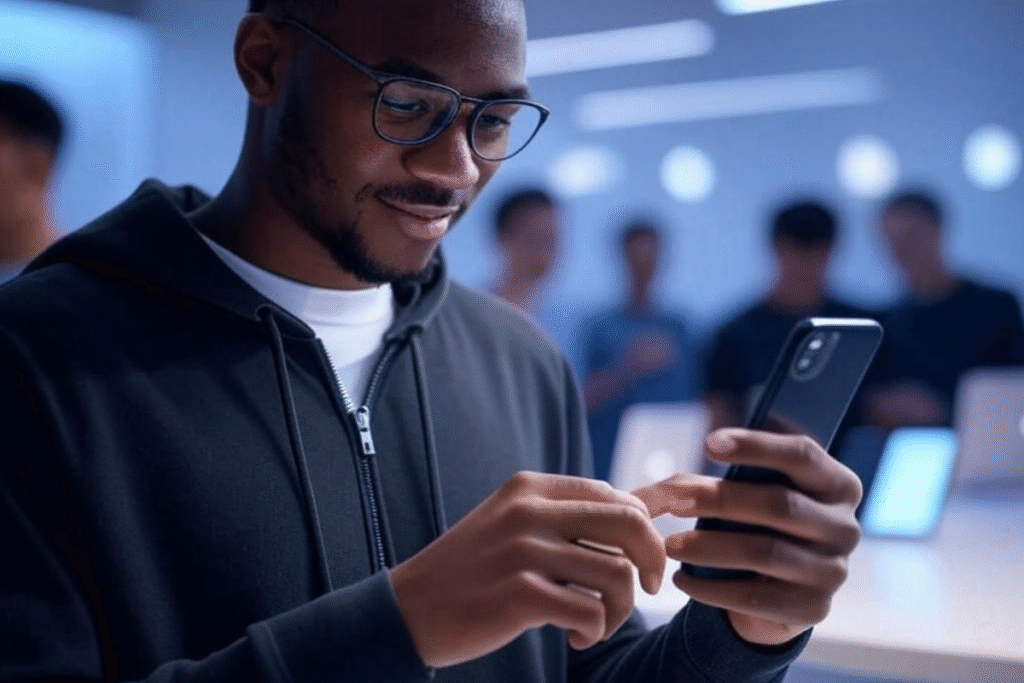Technology is at its best when it empowers everyone, regardless of ability. For years, Apple has positioned itself as a leader in making its devices and software accessible to a wide range of users. This isn’t just a philanthropic effort; it’s a core part of their design philosophy and a significant factor in their ecosystem’s strength. For those tracking Mobile Tech insights, Apple’s recent promotion of new accessibility features for the upcoming iOS 19 and macOS 16 through dedicated videos signals a continued, strong commitment to this area.
While the specifics of every single feature in these future operating systems are eagerly anticipated, Apple’s decision to highlight accessibility early on underscores its importance. It suggests that iOS 19 and macOS 16 will bring meaningful advancements that could significantly impact how individuals with disabilities interact with technology, setting a higher bar for the industry. Let’s explore the significance of this focus and what we might expect from these new features.
Why Accessibility is a Cornerstone for Apple

Apple’s emphasis on accessibility isn’t a recent phenomenon. It’s been woven into their software and hardware for decades, stemming from the belief that technology should be universally usable. This philosophy translates into several key benefits for the company and its users:
- Expanding the User Base: By making devices accessible, Apple opens its ecosystem to millions of potential users worldwide who might otherwise face barriers. This is not only socially responsible but also makes strong business sense.
- Driving Innovation: Designing for the edges – for users with specific needs – often leads to innovations that benefit everyone. Features initially developed for accessibility, like Siri or Dictation, have become mainstream tools.
- Building Brand Loyalty: A strong commitment to accessibility fosters deep loyalty among users who rely on these features daily. It positions Apple as a company that cares about its users’ diverse needs.
- Setting Industry Standards: Apple’s advancements often push other tech companies to improve their own accessibility offerings, raising the overall standard across the industry.
This strategic focus means that when Apple releases new operating systems like iOS 19 and macOS 16, accessibility features are not an afterthought but a key part of the announcement, driving important Mobile Tech insights about the future direction of personal computing.
Anticipating the Features: What iOS 19 and macOS 16 Might Bring

Based on Apple’s history and the typical evolution of accessibility technology, the features highlighted for iOS 19 and macOS 16 are likely to fall into several key categories, addressing various needs:
Vision Accessibility
For users with visual impairments, Apple has traditionally offered powerful tools like VoiceOver (a screen reader), Zoom, Magnifier, and display accommodations (like Invert Colors and color filters). What could be next?
- Enhanced Object Detection: Building on features like Detection Mode in Magnifier, we might see more sophisticated AI-powered object and person detection, providing richer audio descriptions of the environment.
- Improved Text Recognition and Reading: Advancements in on-device machine learning could lead to more accurate and natural-sounding text-to-speech, perhaps with the ability to read handwritten text or text in complex layouts more effectively.
- Customizable Visual Interfaces: More granular control over interface elements, font weights, spacing, and color contrast beyond existing options could cater to specific low-vision needs.
- Advanced Braille Display Support: Continued refinement of compatibility and features for external Braille displays.
Hearing Accessibility
Apple has made significant strides in hearing accessibility with features like Made for iPhone hearing aids, Live Listen, and sound recognition. What could iOS 19 and macOS 16 add?
- More Granular Sound Recognition: Expanding the library of recognizable sounds and allowing users to train the device to recognize specific custom sounds important to them (e.g., a specific doorbell).
- Enhanced Conversation Boost: Further improvements to isolating and amplifying voices in noisy environments, potentially using more advanced spatial audio processing.
- Customizable Audio Alerts: More options for visual or haptic alerts for sounds, tailored to different types of notifications or environmental sounds.
- Improved Live Captions: Expanding the availability and accuracy of real-time captioning across more apps and system functions.
Mobility Accessibility
Features like AssistiveTouch, Switch Control, Voice Control, and Full Keyboard Access have provided alternative ways to interact with devices. What innovations might come in iOS 19 and macOS 16?
- More Refined Voice Control: Increased accuracy, faster response times, and potentially more natural language processing to understand a wider range of commands and contexts.
- Advanced Hand Tracking and Gestures: Leveraging camera technology for more precise and customizable hand tracking and gesture recognition as input methods, potentially building on features seen in Apple Vision Pro.
- Personalized AssistiveTouch Actions: Easier creation and customization of complex multi-touch gestures or actions triggered by simple taps or head movements.
- Improved Compatibility with Assistive Devices: Seamless integration and expanded functionality with a wider range of third-party switches, joysticks, and other adaptive accessories.
Cognitive Accessibility
Features like Guided Access, Screen Time, and simplified interfaces help users with cognitive differences manage focus and navigate their devices. What could be next?
- Personalized Focus Modes: More advanced and easily configurable Focus Modes that can adapt based on location, time, or even activity detected by the device.
- Simplified Modes with Greater Customization: Building on features like the simplified Home Screen layout, offering more deeply customizable “easy modes” that can hide complexity for specific users without being overly restrictive.
- Enhanced Visual and Audio Cues: More options for non-text-based alerts and feedback to help users understand what is happening on their device.
- Proactive Task Assistance: AI-driven features that can anticipate user needs and offer simplified workflows for common tasks.
General Accessibility Enhancements
Beyond specific categories, Apple often introduces general improvements that benefit multiple user groups:
- Easier Accessibility Setup and Discovery: Making it simpler for users to find, understand, and configure the accessibility features that are right for them during initial device setup and later.
- Cross-Device Consistency: Ensuring that accessibility features work seamlessly and consistently across iPhone, iPad, Mac, Apple Watch, and Apple TV.
- Developer Tools: Providing developers with better tools and APIs to build accessibility directly into their apps from the ground up.
The promotional videos likely offer glimpses into some of these areas, showcasing real-world use cases and the impact these features have on individuals’ lives.
The Impact on Users and the Market
The introduction of significant new accessibility features in iOS 19 and macOS 16 will have a profound impact:
- Empowerment and Independence: For individuals with disabilities, these features can unlock new levels of independence in communication, access to information, education, employment, and entertainment.
- Reduced Digital Divide: By making technology more usable, Apple helps to bridge the digital divide for people who might otherwise be excluded.
- Innovation Across the Industry: When Apple introduces powerful new accessibility features, it often spurs other tech companies to develop similar or even more advanced solutions, leading to a rising tide that lifts all boats in the accessibility space.
- Greater Awareness: Highlighting accessibility in promotional materials helps raise public awareness about the importance of inclusive design and the capabilities of assistive technology.
These are crucial Mobile Tech insights because they show that innovation isn’t just about faster processors or better cameras; it’s also about making technology work for everyone.
Accessibility Focus: Apple vs. Others (A High-Level View)
While many companies are improving accessibility, Apple’s integrated approach across hardware, software, and services often sets it apart.
| Aspect | Apple’s Approach | Many Competitors’ Approach (Varies) | Potential Advantage for Apple |
|---|---|---|---|
| Integration | Deeply integrated into OS and hardware | Often added as features or overlays | More seamless, reliable, and performant user experience |
| Ecosystem Support | Consistent features across iPhone, Mac, Watch, etc. | Features may vary significantly between devices/platforms | Users can rely on accessibility across all their Apple devices |
| Proactive Development | Often develops features based on user needs & research | May be more reactive to compliance or user requests | Leads to more innovative and user-centered solutions |
| Visibility | Prominently features accessibility in marketing | May be less emphasized in mainstream marketing | Raises awareness and attracts users who prioritize accessibility |
| Hardware Integration | Designs hardware (e.g., chips, sensors) with accessibility in mind | Relies more on off-the-shelf components | Enables unique features tied to specific hardware capabilities |
This table provides a simplified view, as many companies are making significant strides in accessibility. However, Apple’s long-standing, integrated, and highly visible commitment remains a key differentiator and a source of valuable Mobile Tech insights.
A Personal Perspective on the Impact

As someone who follows technology closely, I’ve seen firsthand the transformative power of accessibility features. I have friends and family members who rely on features like VoiceOver, Live Captions, and Switch Control to use their devices independently. Seeing Apple continue to invest heavily in this area with updates like those expected in iOS 19 and macOS 16 is genuinely exciting. It’s a reminder that technology can be a powerful equalizer, breaking down barriers and enabling people to connect, learn, and work in ways that weren’t possible before. The videos promoting these features are particularly impactful because they showcase real people benefiting from the technology, making the impact tangible and inspiring.
Conclusion
Apple’s continued focus on accessibility, highlighted by the preview of features coming in iOS 19 and macOS 16, is more than just a product update; it’s a statement about their values and their vision for the future of technology. By pushing the boundaries of what’s possible in areas like vision, hearing, mobility, and cognitive accessibility, Apple not only improves the lives of millions but also sets a crucial standard for the rest of the industry.
These advancements provide valuable Mobile Tech insights, demonstrating that true innovation includes designing for everyone. As we look forward to the full unveiling of iOS 19 and macOS 16, the accessibility features will undoubtedly be among the most impactful additions, reinforcing Apple’s position as a leader in creating technology that is powerful, intuitive, and, most importantly, accessible to all.
What accessibility features are you most hoping to see in iOS 19 and macOS 16? Share your thoughts and Mobile Tech insights in the comments below!

